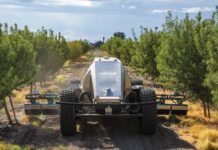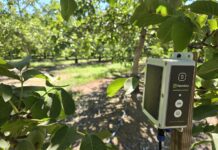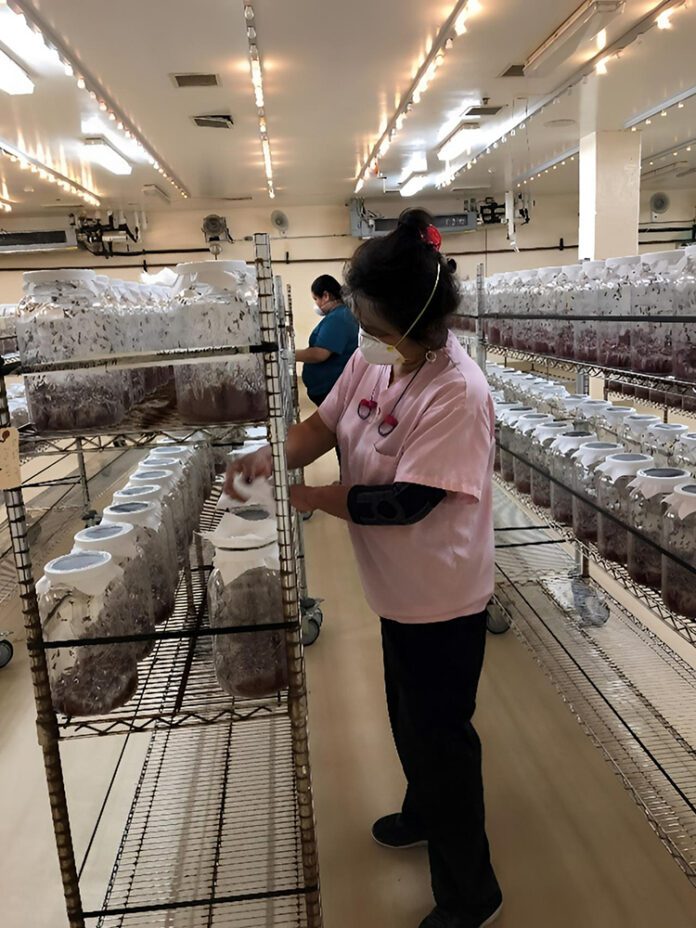Listen to the audio version of this article. (Generated by A.I.)
In California’s Central Valley, tree nut growers are evaluating an innovative and environmentally friendly method to combat the navel orangeworm (NOW), one of the most damaging pests in the industry. If you happen to be in the area and see a small propeller plane releasing what looks like gray dust, look again, it’s not dust but a cloud of sterile moths.
How Does It Work?
This method, known as sterile insect technique (SIT), works by releasing large numbers of sterile moths into the environment in areas where the pest occurs, such as the San Joaquin Valley. SIT is a proven, environmentally friendly method that has been used successfully against other pests, including New World screwworm, pink bollworm and Mediterranean fruit fly. The concept is simple: sterilized insects of the same species are released into the environment where they mate with fertile wild insects. Since the pairings cannot produce offspring, the wild population cannot lay viable eggs and therefore the moths cannot infest tree nuts.
“This is a proven technology used to control insect pest populations,” said USDA Animal and Plant Health Inspection Service’s (APHIS) expert Earl Andress, the former director of the sterile insect rearing facility in Phoenix, Ariz. “Instead of pesticides, scientists use a carefully controlled sterilization process and then release the moths into the orchards.”
APHIS leads the NOW sterile insect technique program, a cooperative effort with CDFA and the California tree nut industry. This partnership evaluates how SIT can effectively reduce NOW populations and subsequent tree nut damage in the San Joaquin Valley. SIT is used along with other integrated pest management practices that growers already use.
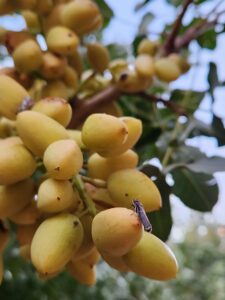
Why Manage the NOW Moth?
California produces most of the world’s almonds and a significant share of the global pistachio and walnut supply. NOW threatens these valuable crops. A single female NOW moth can lay up to 100 eggs; some lay more than 200, leading to rapid population growth if left unchecked. When the eggs hatch, the larvae burrow inside the nut to feed, causing damage and increasing the risk of aflatoxin contamination. These toxic compounds are produced by certain molds that can develop in damaged nuts. Strict regulations on aflatoxin levels in nuts mean that even a small amount of infestation can lead to huge financial losses for growers.
What originally began as a proof of concept to see whether APHIS could produce and deliver sterile NOW moths to California has since evolved into a promising tool for managing this damaging pest. Much of APHIS’s early work focused on developing artificial diets, standard operating procedures and equipment, insect colony strains and sanitation controls for mass producing sterile NOW moths. Today, APHIS mass-produces, sterilizes, packages and ships 750,000 sterile moths per day for release in California.
Once the sterile moths arrive, CDFA tests their viability before releasing them by airplane or truck. CDFA samples insects from each shipment and records the percentage that do not survive after different time intervals under controlled conditions at the CDFA field office.
The SIT moth release season typically runs from March through October, when tree nuts are susceptible to NOW damage. During that period, APHIS sends daily shipments of sterile moths to CDFA. CDFA also monitors NOW populations year-round in participating orchards to assess the size of wild populations and sterile moth recapture.
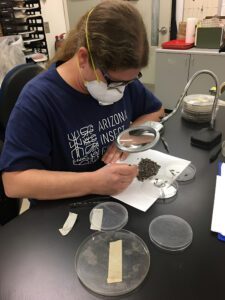
Integrated Pest Management: Combining SIT with Other Methods
SIT is not a standalone solution; it is part of a larger integrated pest management strategy. Many participating orchards combine SIT with mating disruption, winter sanitation, prompt harvest and targeted pesticide treatments.
• Mating disruption releases synthetic pheromones into the orchard to confuse male NOW moths, preventing them from finding females.
• Winter sanitation involves removing fallen nuts and plant debris to eliminate overwintering habitat.
• Prompt harvest reduces the number of generations of NOW moths that can attack the tree nuts.
• Targeted pesticide treatments against NOW are most effective when applied strategically.
Results
During the 2024 field season, APHIS and CDFA released sterile moths on two 640‑acre pistachio orchards and two 640‑acre almond orchards, with an equal number of untreated acres serving as controls. Some SIT orchards also used mating disruption to evaluate how the methods worked together.
CDFA collected data from participating orchards, including insect trap counts, pesticide use, and agronomic and sanitation practices. CDFA also visually assessed damage in almonds using an established protocol. Preliminary results are encouraging. In orchards that used SIT alongside other methods, the program observed:
• A 50% reduction in damage to in‑shell pistachios compared with control orchards that did not use SIT
• A nearly 60% reduction in damage to almonds compared with control orchards that did not use SIT
The preliminary result was even greater pest suppression in almonds (up to 75% damage reduction) when orchards combined SIT with mating disruption. In 2024, APHIS and CDFA released about 176.5 million sterile moths over participating orchards. Starting this year, APHIS and CDFA are adding a NOW visual damage assessment protocol for pistachios to capture more detailed data beyond the in‑shell damage currently recorded from grade sheets supplied by participants.
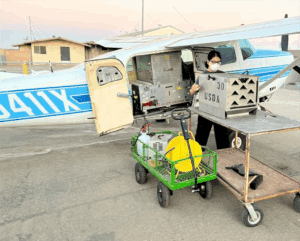
Benefits
While the NOW SIT program required an initial investment to develop the Phoenix rearing facility’s ability to produce viable sterile moths, preliminary results indicate that this tool can reduce crop losses to this damaging pest. SIT has the potential to lower pesticide use, increase yield quantity and quality, and offer an environmentally sustainable approach to meeting agricultural goals while maintaining a healthy balance with the pollinators our crops depend on.
Looking Ahead
APHIS and CDFA remain focused on releasing sterile moths and evaluating the program’s efficacy. This year’s SIT releases started at the end of March in participating orchards, and the program is still looking for growers to participate in the San Joaquin Valley. Owning a tree nut orchard in Kern, Kings, Fresno or Tulare counties may qualify you for enrollment. You can learn more at upcoming grower participation meetings or by going to cdfa.ca.gov/plant/ipc/nowp/index.html. To sign up for trapping reports, grower updates and enrollment information, email the Navel Orangeworm Program at NOWprogram@cdfa.ca.gov or sign up for the program’s listserv on CDFA’s website.
The use of sterile moths is a transformational step in the state’s fight against the NOW. As growers integrate SIT with proven pest management strategies, the future looks promising for California’s tree nut industry.


